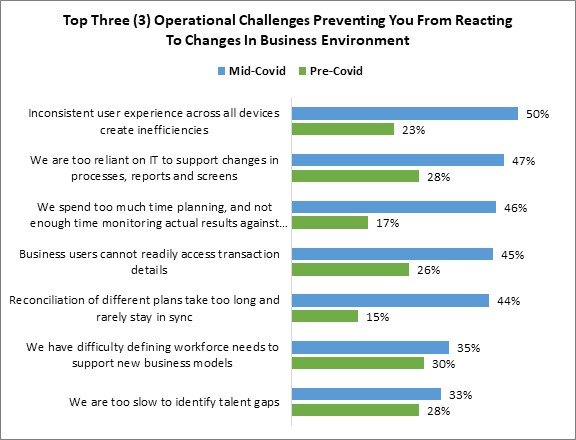A Few Months Later: How’s The Workforce Looking?
Next week, Paula and I are presenting on a webinar about a research piece we conducted “mid-Covid” (or at least that’s what we called it at the time). It was released in November – before the election, before the holiday surge in coronavirus cases, and before anyone had any idea what the holiday shopping season was going to look like.
That said, while we were prepping the content for this event (March 17, and hosted by the sponsor, Ceridian – feel free to sign up here), we were positively blown away at how much the data stands up. We’re not saying we have the ability to read the future, but if we’ll give ourselves credit for anything, it is knowing what questions to ask.
One thing we were asked to identify all these months later: what’s the most important chart in the report? We had a hard time picking just one, but this one made both of our short lists:
Figure: Physical Isolation Brings A Whole New Set Of Workforce Challenges

Source: RSR Research, November 2020
In a disrupted world, no one can deny that the business environment for retailers has changed. In fact, we may well have come upon one lasting aspect of the COVID pandemic – the recognition that office workers can get their jobs done regardless of where they may be physically located. This is great for people who waste hours of their days commuting to work in cars and on trains, and as a bonus, it will take some pressure off aging bridge, road, and highway systems. But as we can see this figure, it does create a whole new set of operational issues for retailers.
The opportunity for employees to ask a fellow office worker, “How do you do this again?”, just doesn’t exist anymore. Neither does the chance to lobby IT to “help a fellow worker out” by changing a report or a screen on the fly. Today, office work involves conference calls, cameras, and/or email, where conversations can go on endlessly and all nuance is lost. We can see clearly just how dramatically this has affected retailers in the figure above.
Ironically, it’s a very similar dichotomy to the one retailers face in their stores. “Store support” is a “thing” in the world of retail IT. And it has rarely been a fun interaction for people on either side of the problem. Store support is expensive, it can be frustrating for those being supported and those performing the support, but it’s not always effective. Now we find ourselves in the same situation with the rest of the workforce.
What can be done? Retailers cannot wait for the pandemic and other disruptions to end. In fact, based on housing prices in suburbs near major cities, it’s doubtful these workers will ever return to their cubicles and tiny apartments. Retailers must implement technologies with more consistent and user-friendly experiences, workers must become more self-reliant and able to both pull and use corporate data, and they have to somehow create and execute plans without ever meeting face to face.
As a company that has been virtual for over thirteen years, RSR can attest that there are real challenges lurking in an all-virtual business environment. One person learns how to use a piece of software and becomes a single point of failure. Version control of spreadsheets and other shared files becomes a science project, and the risk of long threads of increasingly irritating emails is high. The clear imperative for a company at scale is the need for more consistency to reduce these challenges.
If you’d like to hear more of this ongoing conversation, join us next week!
